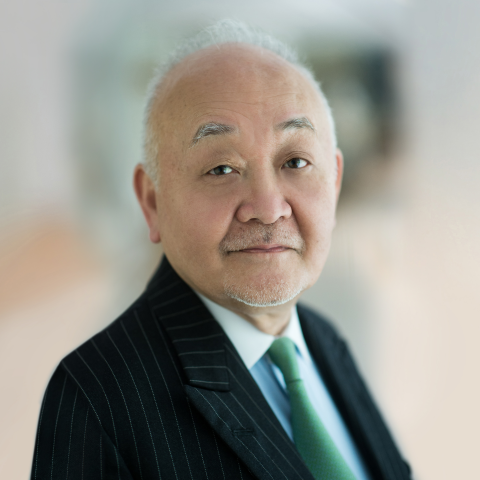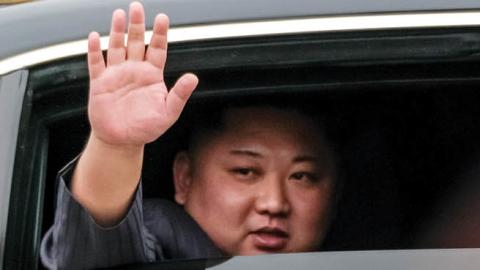Negotiating with North Korea is more complicated than meets the eye, even though US President Joe Biden’s administration is anxious to start. It is true that North Korea is not in any hurry to resume discussions with the United States despite the White House pushing for “discussions.” But the truth of the matter is that you don’t undertake “discussions” or “negotiations” without an agenda, which must include a roadmap.
Biden has explicitly scrapped former president Donald Trump’s policy on North Korea. That appears also to bury the Singapore Summit and the written denuclearization agreement between Kim Kong Un and Trump.
There are many issues that separate North Korea from the US and from others, particularly South Korea. It should always be kept in mind that there is only an armistice agreement between North Korea and China and the United States, in place since 1953.
Nuclear arsenal and delivery systems
For the US the main issue is denuclearization, that is, the elimination of North Korea’s nuclear arsenal and the means of making nuclear weapons.
This is quite a complicated matter, since North Korea is already far advanced in building a nuclear weapons arsenal. Moreover, North Korea has the possibility of different weapons’ delivery systems, including advanced ballistic missiles, both land-based and submarine-launched. North Korea also has cruise missiles in its arsenal and has been improving them for accuracy and payload size.
It is not quite clear what types of nuclear weapons are in North Korea’s arsenal. The most basic kinds are fission weapons, which typically have a yield in kilotons. Upscale from fission weapons are boosted fission weapons, designed to increase the size of an atomic blast. And beyond fission and boosted are fusion or hydrogen nuclear weapons, which can deliver megatons in explosive power.
Photos of Kim Jong Un inspecting nuclear warheads show what looks like copies of American fusion weapons, but these may be solely for propaganda purposes. Previous tests of nuclear weapons and blast size suggest North Korea has boosted weapons, although a case can be made for fusion weapons.
The most recent test reportedly had a yield of 140 kilotons, about 10 times that of the Hiroshima uranium fission bomb, but still short of megatonnage range.
North Korea may have as many as 60 nuclear weapons.
At the present time North Korea can legitimately threaten South Korea (where US troops are stationed), Japan (where US Air Force and Navy bases are located), and even the continental US thanks to a number of intercontinental ballistic missiles (ICBMs) entering its arsenal.
Currently neither Japan nor South Korea has nuclear weapons, although it isn’t clear for how much longer that will be the case.
Japan has a mature commercial space-launch program and thus the ability potentially to turn its rockets into armed ballistic missiles. The US Federation of American Scientists compared Japanese commercial space vehicles with US strategic nuclear forces:

As the comparison shows, outside of the larger payload of the MX Peacekeeper, Japanese commercial and US strategic missiles are equivalent.
Japan has nearly unlimited stockpiles of plutonium, so fabricating a nuclear weapon would not take Japanese industry much time. Depending on the course of events in the region, Japan may feel that it cannot longer rely on the United States. Should that happen, Japan could quickly go nuclear, although politics inside Japan could preclude that.
Seoul, however, has safeguarded nuclear reactors and a limited missile capability because the US has opposed long-range weapons in the South Korean arsenal. But the September 7 South Korean submarine-launched ballistic missile (SLBM) test has raised significant questions in Pyongyang, could see the start of a nuclear arms race between the two Koreas.
Until now, the nations that have SLBM capability – the US, the UK, France, Russia, China, India (in development), North Korea (in development), possibly Israel – can use them to deliver nuclear weapons. South Korea is building a new class of home-built 3,000-ton submarines such as the Dosan Ahn Chang-ho that can launch either ballistic missiles or cruise missiles.
These advanced diesel-electric submarines are equipped with fuel cells and lithium battery power packs and can stay submerged for 50 days or more. They are exceedingly hard to detect. The South Korean SLBM is reportedly a variant of the Hyun Moo 2B ballistic missile with an extended range.
The accuracy of these missiles (around 30 meters circular error of probability) is not good enough for conventional weapons against high-value targets. However, with a nuclear warhead it is an entirely different story.
Certainly, one of the reasons North Korea quickly launched a “new long-range” cruise missile “over the weekend” of September 11-12 was to answer South Korea’s SLBM launch.
The North Korean action was rushed because, had a choice been available, it would have demonstrated an SLBM, which is currently under development. But not being prepared to do that, the choice went to the “new” long-range cruise missile with a range of 1,500 kilometers.
The test was said to be successful and represented a “strategic weapon of great significance” according to the North Korean government. Unlike previous staged missile launch demonstrations, Kim Jong Un did not attend the launch.
On Wednesday, North Korea launched two missiles of unknown type in the direction of Japan. It isn’t clear what purpose, beyond testing, this latest launch meant.
It is an open question whether, in the future, South Korea will decide to build nuclear weapons. A lot depends on the influence of the United States and whether the pro-unification government remains in power. But from the standpoint of North Korea, its planners must be thinking of the possibility, especially as American influence wanes in the region.
The recent debacle in Afghanistan and China’s growing and aggressive military suggest to South Korea and North Korea, as it suggests to Japan, that Pax America is disappearing into the sunset.
More complications
Beyond the complexity of the nuclear situation in the region and on the Korean Peninsula, North Korea has other issues. It wants a peace treaty with the United States, the removal of US troops from South Korea, diplomatic recognition and, most immediately, the end of economic sanctions.
The Biden administration has not indicated its position on North Korea’s wish list, nor has it suggested a roadmap. In fact, the administration is known to be hunting for North Korean interlocutors, but so far has come up empty.
The bottom line is that North Korea is waiting and watching. While it would not necessarily turn down a good deal, it would take a comprehensive US proposal even to begin the dialogue. Worse still, the rush of geopolitical events worldwide, and in North and East Asia in particular, would worry any of the potential participants including North Korea, South Korea and Japan.
Read in Asia Times



















